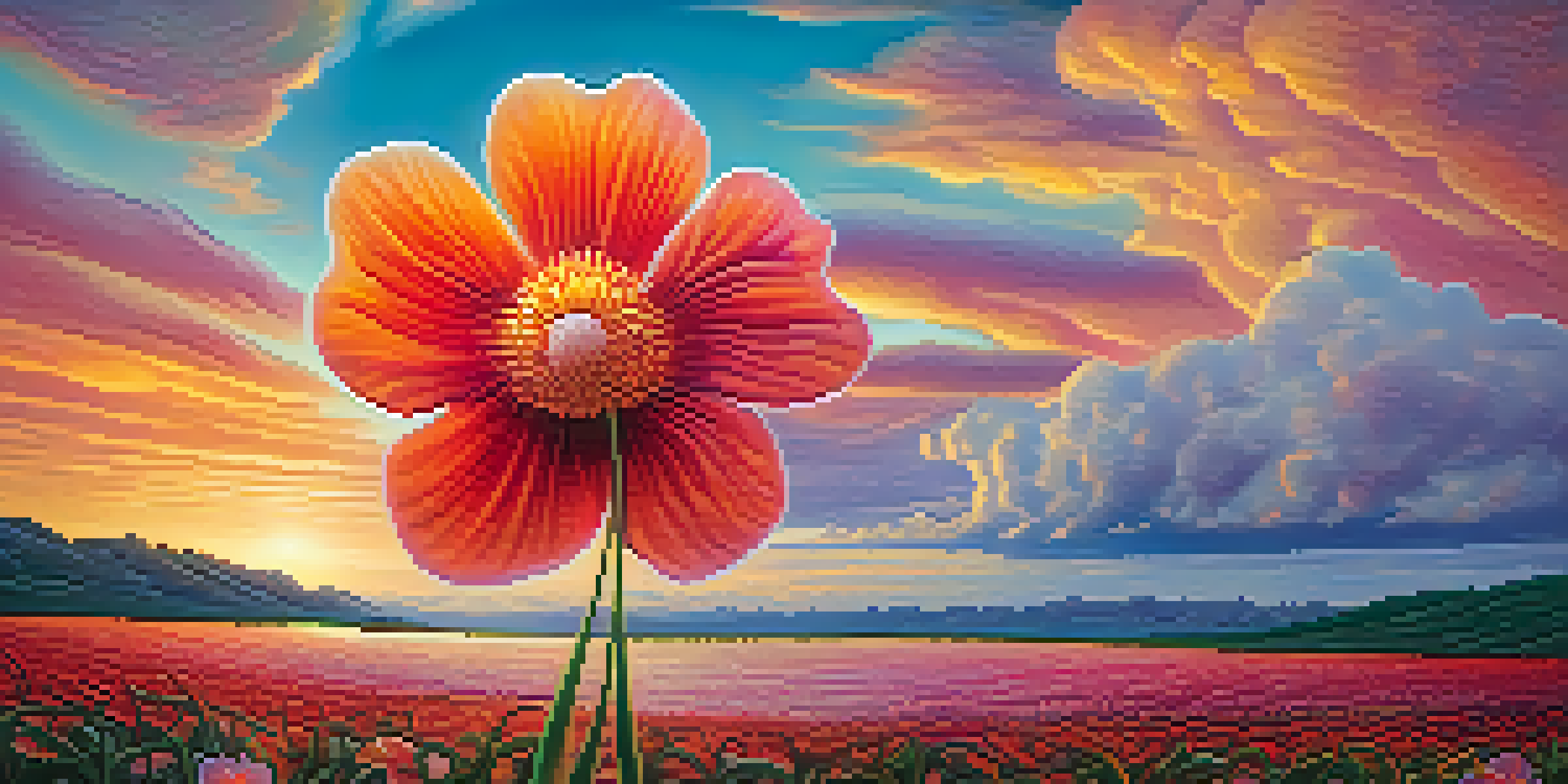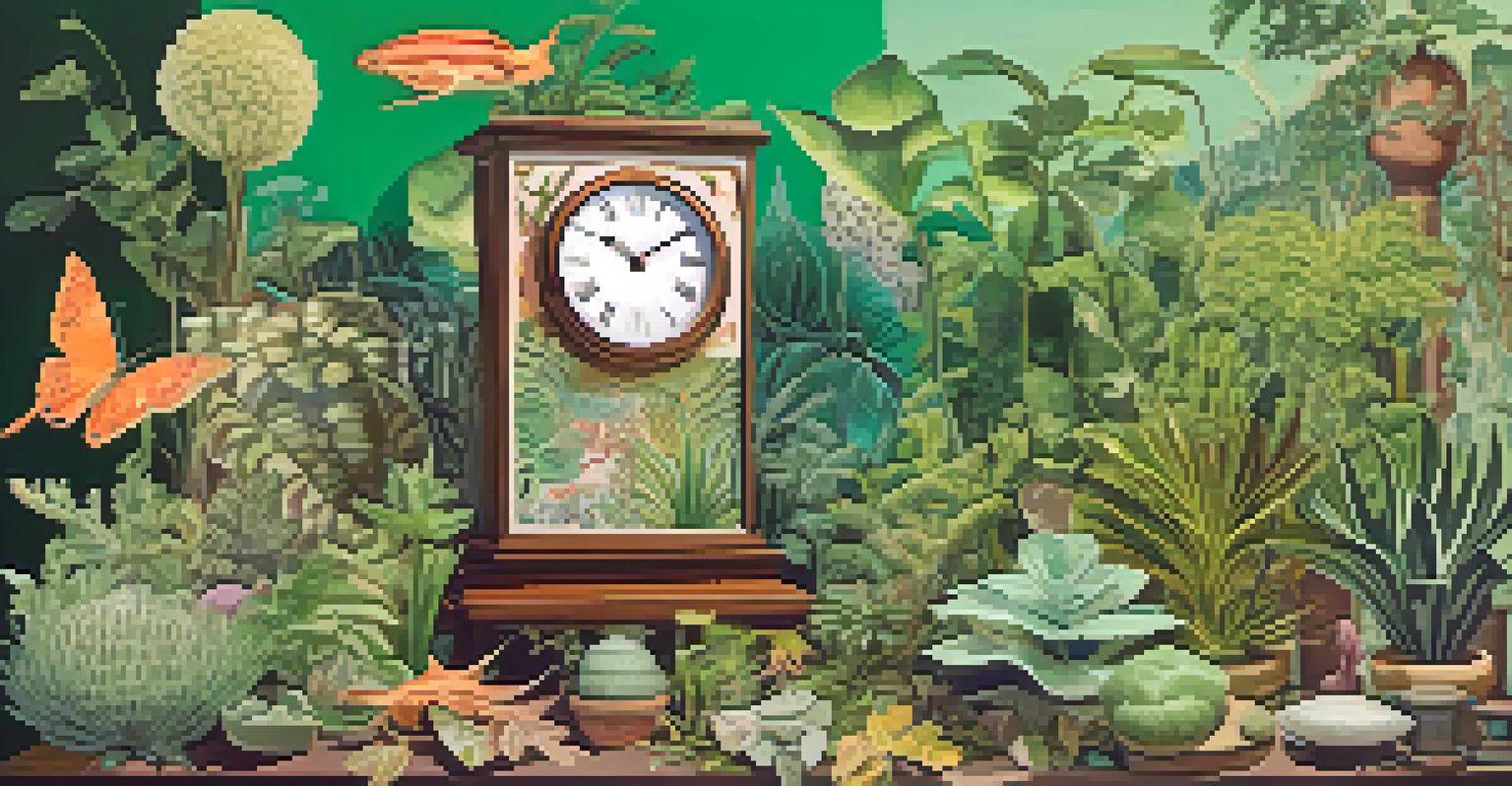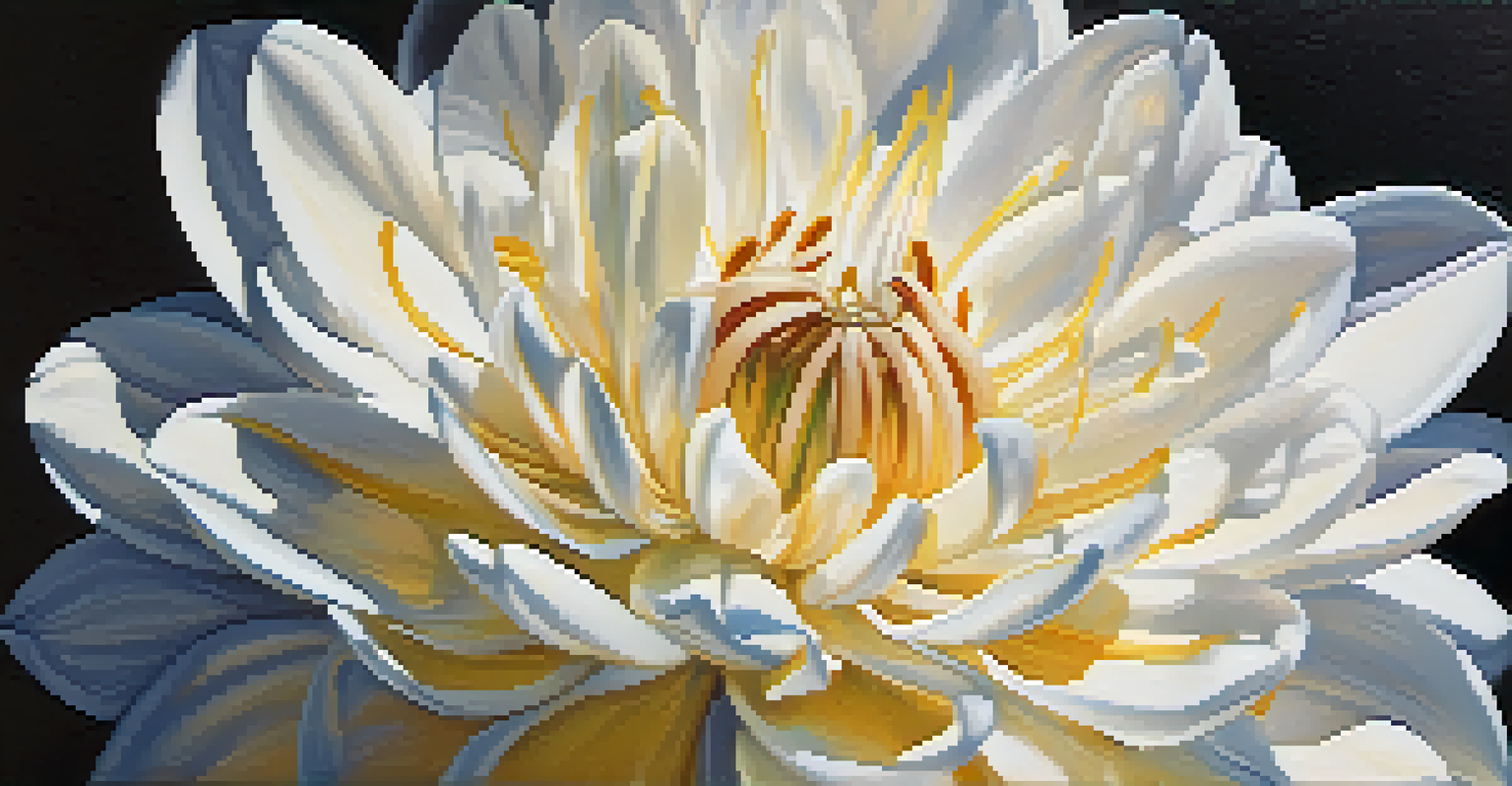The Use of Plants in Surrealist Art and Literature

Introduction to Surrealism and Its Fascination with Nature
Surrealism, an artistic and literary movement that emerged in the early 20th century, sought to unlock the unconscious mind. This approach often led to a fascination with the natural world, particularly plants, which can symbolize growth, decay, and the bizarre. By intertwining the organic with the imaginative, surrealists aimed to explore the boundaries between reality and dreams.
Surrealism is based on the belief in the superior reality of certain forms of previously neglected associations, in the omnipotence of dream, in the disinterested play of thought.
In many ways, plants serve as a metaphor for the surreal experience itself—rooted in reality yet capable of extraordinary transformations. The juxtaposition of everyday flora with dreamlike scenarios invites viewers and readers to question their perceptions of the world. This dynamic relationship between nature and surrealism creates a rich tapestry of meaning to be unraveled.
As we delve deeper into this topic, we’ll explore how various surrealist artists and writers employed plants to convey complex emotions and themes. From the dreamlike landscapes of painters to the enigmatic prose of writers, plants play a vital role in surrealism's overarching narrative.
Symbolism of Plants in Surrealist Paintings
In surrealist paintings, plants often take on symbolic roles, representing themes such as transformation, duality, and even the subconscious. For instance, Salvador Dalí frequently used flowers and plants in his works to evoke the fragility of life and the passage of time. His famous painting 'The Persistence of Memory' features melting clocks draped over branches, illustrating how time can warp our perceptions.

Similarly, Max Ernst employed plants in his collages to juxtapose the familiar with the bizarre, creating a sense of disorientation. By combining real plant imagery with dreamlike elements, Ernst invites viewers to explore the boundaries of their understanding. This blending of the ordinary and the extraordinary reflects the surrealist goal of challenging rational thought.
Plants as Symbols in Surrealism
In surrealist art and literature, plants symbolize complex themes such as transformation and the subconscious.
These symbolic representations of plants serve not only to enhance the visual appeal of the artwork but also to provoke deep emotional responses. The viewer is encouraged to ponder the underlying meanings and personal connections to nature that each piece evokes, thus deepening their engagement with the art.
Literary Representations of Flora in Surrealism
In the realm of literature, surrealist writers often utilized plants to evoke vivid imagery and convey complex emotions. André Breton, a leading figure in the movement, wrote extensively about nature and its surreal qualities. In his novel 'Nadja,' he describes encounters with various plants that symbolize longing and the search for identity.
The only difference between a madman and me is that I am not mad.
The use of plant imagery in surrealist literature allows for a rich exploration of themes such as love, desire, and the subconscious. Writers might describe a blooming flower to illustrate the beauty of fleeting moments or a decaying leaf to symbolize loss. These natural elements serve as powerful metaphors that resonate deeply with readers, drawing them into the surreal experience.
Furthermore, the blending of the natural and the fantastical in surrealist literature challenges traditional narrative structures. By incorporating plants in unexpected ways, writers invite readers to engage with the text on a deeper level, fostering a sense of wonder and curiosity about the world around them.
The Influence of Psychoanalysis on Surrealist Plant Imagery
Psychoanalysis played a crucial role in shaping the surrealist movement, particularly in how artists and writers approached plant imagery. Sigmund Freud’s theories on the unconscious mind led surrealists to explore hidden desires and fears, often symbolized through natural elements like plants. This connection highlights how the surrealists sought to tap into deeper psychological truths.
For instance, the phallic shapes of certain plants may represent sexual desire, while other flora could symbolize nurturing or maternal instincts. By using plants as a lens to examine the unconscious, surrealists created a space where raw emotions could be expressed and interpreted. This psychological exploration adds layers of meaning to their work, inviting audiences to decode the symbols.
Psychoanalysis Shapes Plant Imagery
The influence of psychoanalysis on surrealism led artists to use plants as representations of hidden desires and emotions.
The interplay between plants and psychoanalysis encourages a more profound understanding of both art and literature. By recognizing the psychological implications behind plant imagery, we can appreciate the surrealists’ intentions and the impact of their work on our perception of nature and self.
Notable Surrealist Artists and Their Use of Plants
Several surrealist artists made significant contributions to the incorporation of plants in their work, each bringing a unique perspective. Yves Tanguy is known for his dreamlike landscapes populated by abstract plant forms that evoke a sense of otherworldliness. His use of organic shapes blurs the line between reality and imagination, allowing viewers to lose themselves in his surreal worlds.
Another notable figure, Georgia O'Keeffe, infused her paintings with plant motifs that challenged conventional representations of nature. While she is often associated with American modernism, her work exhibits surreal elements, particularly in her close-up depictions of flowers. O'Keeffe's bold colors and exaggerated forms create an emotional resonance that invites contemplation.
These artists, among others, demonstrate the versatility of plant imagery in surrealism. By examining their work, we can appreciate how plants serve as both a source of inspiration and a vehicle for expressing complex ideas within the surrealist framework.
The Role of Plants in Surrealist Poetry
Surrealist poetry often embraces the natural world, with plants serving as potent symbols for the exploration of thought and emotion. Poets like Paul Éluard and Louis Aragon infused their verses with vivid botanical imagery, using nature as a backdrop for their musings on love, dreams, and the human experience. This approach creates a rich sensory experience for readers, evoking imagery that lingers long after the poem is read.
The juxtaposition of plant life with abstract concepts allows surrealist poets to create unexpected associations. For example, a simple rose might symbolize love and desire, while its thorns could evoke pain or betrayal. This duality reflects the complexities of human emotions and experiences, making the poetry relatable yet enigmatic.
Legacy of Surrealist Plant Imagery
The integration of plant imagery in surrealism enriches artistic expression and fosters a deeper understanding of human emotion.
Ultimately, the presence of plants in surrealist poetry enhances the overall impact of the work. By weaving botanical elements into their verses, poets not only enrich their language but also invite readers to explore the deeper meanings behind the words, creating a lasting impression.
Conclusion: The Lasting Impact of Plants in Surrealism
The use of plants in surrealist art and literature illustrates the movement's rich exploration of the human experience. By incorporating elements of nature, surrealists challenge our perceptions and encourage deeper introspection. Plants serve as powerful symbols that enhance the emotional and psychological dimensions of both visual and written narratives.
As we reflect on the legacy of surrealism, it becomes clear that the relationship between plants and the surrealist movement is multifaceted and profound. This connection continues to inspire contemporary artists and writers, reminding us of the beauty and complexity of the natural world. Through their work, they invite us to explore our own unconscious thoughts and feelings.

In conclusion, the integration of plant imagery in surrealism not only enriches the artistic landscape but also fosters a deeper understanding of the human psyche. As we engage with these works, we are reminded of the enduring power of nature to inspire creativity and evoke emotion, transcending the boundaries of reality.